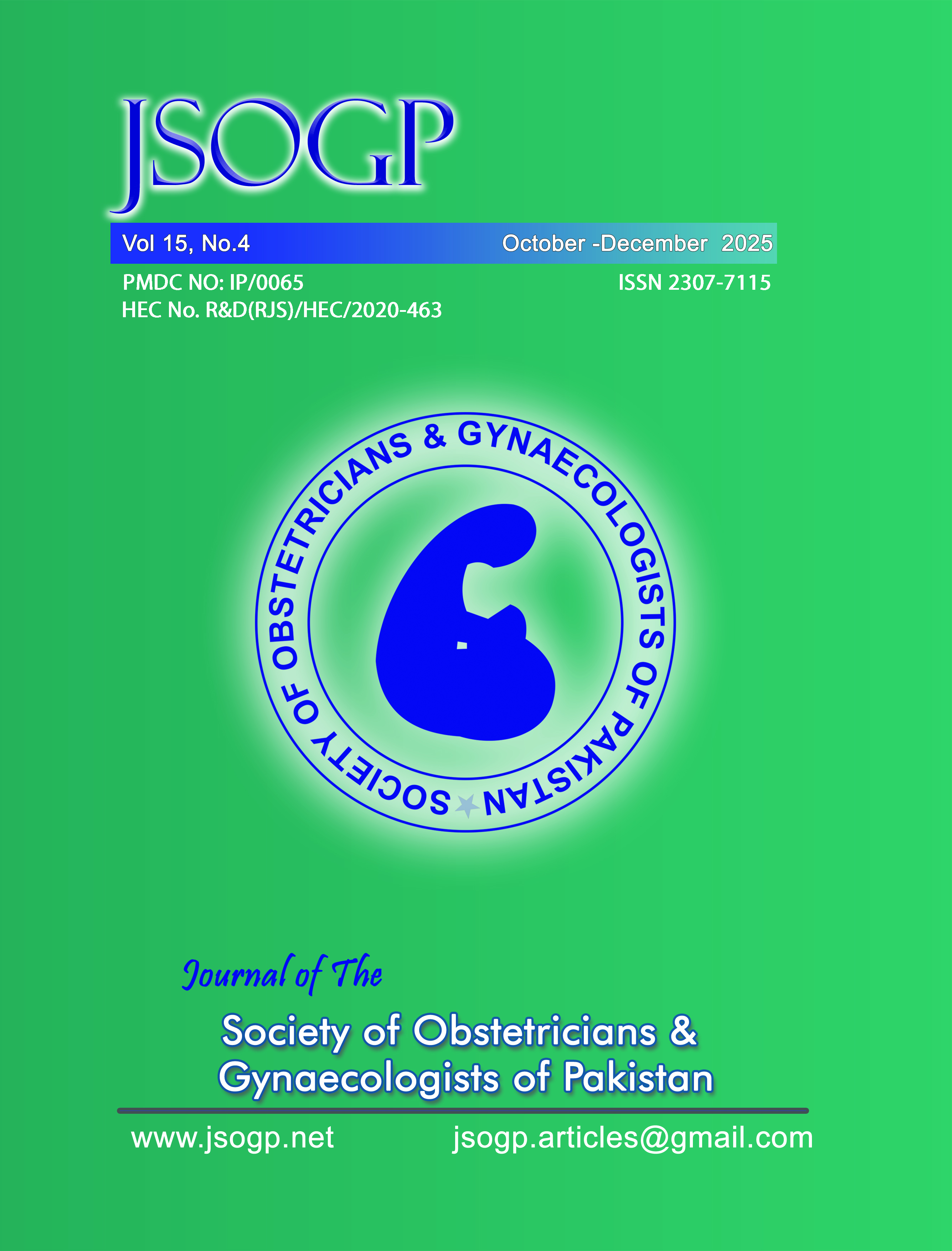Intra-Operative Uterine Scar Dehiscence and Its Relation to Feto-maternal Outcome in Patients of Previous Lower Segment Cesarean Section with Scar Tenderness
Abstract
Objective: To determine frequency of scar dehiscence and its association with feto-maternal outcomes among patients undergoing repeat lower segment cesarean section (LSCS) with scar tenderness.
Methodology: A descriptive case series study was done at Obstetrics and Gynae department, Amna Inayat Medical College (AIMC) Lahore from December 2024 to May 2025. Women aged 20 to 40 years, >37 weeks with history of previous cesarean section delivery undergoing repeat LSCS due to scar tenderness were included. Patients were evaluated intraoperatively for scar dehiscence. Additionally, fetal and maternal outcomes were observed and compared based on the presence or absence of scar dehiscence. Data was analyzed by SPSS version 22.
Results: Overall mean age and mean gestational age of the patients was 30.0 ± 6.196 years and 38.97 ± 1.287 weeks respectively. Average BMI was 26.43 ± 2.551 kg/m2. Overall, scar dehiscence was observed in 22 (19.1%) patients and was significantly associated with pulmonary complications, urinary complications, blood transfusion requirements, and meconium-stained liquor (p < 0.05), while no statistically significant association was found with Apgar score (p > 0.05).
Conclusion: Scar dehiscence was observed in 19.1% of patients undergoing repeat lower segment cesarean section with scar tenderness and was significantly associated with adverse feto-maternal outcomes.
Copyright (c) 2025 Journal of The Society of Obstetricians and Gynaecologists of Pakistan

This work is licensed under a Creative Commons Attribution-NonCommercial 4.0 International License.

